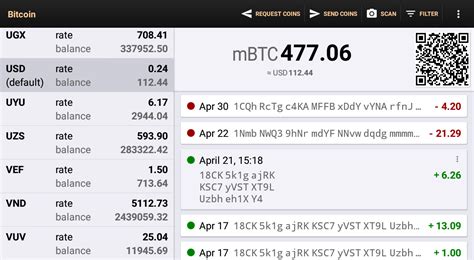Does your Bitcoin multiply with each fork?
Ethereum Blockchain was built on decentralized open code technology called the work proof (POW), which requires significant computer power to confirm transactions. However, it is not the only cryptographic currency that uses this consensus mechanism. Other cryptographic currencies such as Bitcoin Casha (BCH) and Bitcoin Nano (BTNC) also use POW.
When buying or selling Bitcoin, your funds are transferred from one address to another. But what happens when a new fork appears in Ethereum Blockchain? Can your existing bitcoin multiply with each fork?
To understand this question, let’s dive into the basics of cryptocurrency currency and blockchain technology.
How does CRIPTO currency work

Cryptocurrencies such as Bitcoin and Etherum use cryptography to ensure transactions and control the creation of new units. Each blockchain block contains a “transaction” or a set of transactions confirmed by complex mathematical calculations (called proof of work). The first transaction in each block was awarded with newly struck parts.
Forks: What are they?
The fork occurs when a group of developers creates a new version of the blockchain, which is different from the original code. This creates a new version of cryptocurrency currency, which is often called “forking”. For example, if you have 100 bitcoins and decide to go to Ethereum, your funds are not automatically transmitted. You will need to transform your bitcoin into an ether (ETH), which is the original cryptocurrency of the Ethereum network.
Does your existing bitcoin multiply with each fork?
Now let’s see if your existing bitcoin will multiply with each fork in the Ethereum blockchain. The answer is no, unfortunately.
Here is why:
- Cryptographic complexity : Each new blockchain Ethereum blockchain requires significant computer power to confirm transactions. It makes it difficult for users to “mine” or “hack” their way of accumulating a large amount of bitcoin.
- Limitations of Smart contracts: Intelligent contracts are self-execution contracts with certain rules and conditions. They can be used to transfer the property, create new assets and perform other blockchain operations. However, intelligent contracts with each fork do not automatically increase value or size.
- The dynamics of supply and demand
: The Bitcoin number which is extracted by the block is limited by the level of difficulty necessary to approach the mathematical puzzle (proof of work). This means that even if new forks appear, it is unlikely that your existing funds increase exponentially.
Exceptions: Special case
Although your existing bitcoin does not multiply with each fork of the Ethereum blockchain, there are some exceptions:
- Trends on the Haussier market: if you bought Bitcoin at a low price, then sold it at a higher price due to high demand, you could undergo significant prices.
- The initial offer of parts (ICO) : When new cryptographic currencies such as ERC-20 tokens or BEP-20 tokens are launched, their total supply often defines the developers themselves. In these cases, your existing funds can multiply because more parts are available.
Conclusion
Although the value of Bitcoin can be increased with each fork in the Ethereum blockchain, it does not follow a direct multiplication model. Instead, factors such as the dynamics of supply and demand, the constraints of intelligent contracts and market trends play an important role in the formation of cryptocurrency prices.
Consequently, your existing Bitcoin will not be multiplied exponentially with each fork. However, if you are investing in the right cryptocurrencies at the right time, you could feel significant growth options due to Taurus trends or other market factors.
Leave a Reply